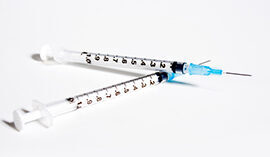
Studies suggest that AICAR peptide may serve as a compelling investigative tool across a spectrum of research domains. Through its potential to engage energy‐sensing pathways, modulate cellular stress responses, and support metabolic networks, it is believed to offer a versatile means to probe physiological regulation. Investigations purport possible roles in cellular metabolism, vascular modulation, regenerative signaling, oncology, and neurological resilience.
Biochemical Character and Mechanistic Foundations
AICAR peptide—more accurately an AMP analog—may resemble adenosine monophosphate in structure and is thought to penetrate cells with relative ease. Research indicates that once internalized, it might be phosphorylated to ZMP (AICA ribotide), which is suspected to engage AMP-activated protein kinase (AMPK). Through this mechanism, AICAR peptide may support activation of AMPK under experimental conditions, initiating downstream signaling that regulates energy homeostasis, cellular metabolism, and stress adaptation.
Beyond canonical AMPK engagement, research indicates that some of the peptide’s supports may arise from off-target activities, including modulation of nucleotide synthesis, cell cycle checkpoints, or alternative kinase pathways. Thus, while AMPK activation may be a primary conduit, alternative or complementary mechanisms might also play roles in the observed phenomena.

Metabolic and Energy Homeostasis Research
In research models, the peptide’s interaction with AMPK pathways may support glucose uptake, lipid utilization, and mitochondrial activity. It is suggested to potentially support glucose transporter function in muscle cells, thereby supporting increased glucose utilization. Simultaneously, inhibition of acetyl-CoA carboxylase through phosphorylation may decrease malonyl-CoA levels, possibly shifting cells toward lipid oxidation over storage.
Mitochondrial biogenesis is another proposed area of support. By triggering PGC-1α and related gene networks, AICAR peptide is thought to prime cells toward better-supported mitochondrial output and oxidative potential, potentially mimicking aspects of endurance training at the molecular level. This metabolic reprogramming may render the peptide an intriguing tool for dissecting energy‐responsive gene networks.
Cellular Endurance, Vascular Dynamics, and Tissue Stress
Investigations purport that the AICAR peptide may contribute to the exploration of mechanisms underlying cellular endurance. Through AMPK-PPARδ axis engagement, it seems to stimulate expression of genes tied to oxidative metabolism, lipid catabolism, and slow-twitch fiber characteristics, offering a model to explore endurance‐like adaptations in muscle cell systems.
Investigations purport that the peptide might also support vascular dynamics—potentially via nitric oxide pathways. Research indicates that exposure to AICAR peptide may correlate with better-supported tissue perfusion and vasodilation, potentially independent of adenosine receptor activity but involving NO release mechanisms. This opens possibilities for studying microvascular regulation and metabolic perfusion in controlled laboratory settings.
Stress Responsiveness, Autophagy, and Ischemic Adaptation
By engaging energy sensors, AICAR peptide has been hypothesized to support autophagic induction in cells experiencing metabolic or oxidative stress. AMPK activation might serve as a trigger for autophagic flux, facilitating organelle turnover and cellular maintenance in experimental paradigms modeling nutrient deprivation or stress.
Investigations purport that in ischemic or energy-restricted conditions, AICAR peptide may allosterically stimulate glycogen phosphorylase or similar pathways, potentially supporting continued ATP generation via glycolysis. Concurrently, fatty acid utilization may be facilitated through AMPK-mediated modulation of transport and oxidation pathways, allowing dual metabolic support.
Vascular and Extracellular Matrix Remodeling Research
Beyond metabolic realms, the peptide has been theorized to play a conceptual role in reparative signaling. Investigations suggest that by modulating AMPK and related pathways, AICAR peptide might support differentiation of fibroblast precursors toward myofibroblast phenotypes, promoting extracellular matrix assembly. In tissue repair models, such actions may help illuminate processes of scar formation, matrix restructuring, and mechanical stabilization post-injury.
Oncology and Cell Proliferation Research
AICAR peptide’s potential to regulate metabolic checkpoints and suppress anabolic activity may render it a tool for probing tumor cell metabolism in experimental oncology. Its interaction with AMPK may impose cell cycle arrest or limit proliferative signaling in neoplastic cells, offering a model to examine metabolic vulnerabilities within experimental tumor systems.
Additionally, modulation of autophagy by the peptide may intersect with cancer biology, given autophagy’s dual roles in tumor suppression and progression. Researchers might employ AICAR peptide to explore how energy‐sensing pathways intersect with autophagic regulation in cancer‐relevant contexts.
Neurometabolic Stability and Neuroprotective Pathways
In neural research paradigms, the peptide’s potential to activate AMPK may support energy regulation in neurons under metabolic stress. It is theorized that AICAR peptide may promote mitochondrial quality maintenance, regulate synaptic resilience, or assist in the clearance of aggregated proteins via autophagy. This positions it as a possible investigative agent in models of neurodegeneration or metabolic challenges in neurons.
Dissection of AMPK-Independent Pathways and Off-Target Actions
One particularly valuable application of AICAR peptide lies in its unexpected or off-target supports, which may reveal AMPK-independent pathways of metabolism regulation. For example, the peptide has been speculated to support nucleotide synthesis, cell cycle regulatory networks, or alternate stress‐responsive kinases. By comparing outcomes with those produced by more selective AMPK modulators, researchers may disentangle direct AMPK-mediated mechanisms from collateral signaling routes, enriching mechanistic understanding.
Experimental Strategy: Combining AICAR Peptide with Complementary Interventions
To delve deeper into the peptide’s multifaceted roles, researchers might consider combining AICAR peptide with agents that modulate upstream or downstream elements—such as LKB1 inhibitors, PPARδ co-activators, or autophagy modulators. This combinatorial strategy may help to parse the hierarchical relationships among signaling nodes, refine interpretation, and expand the relevance of the peptide in dissecting integrated metabolic networks.
Summary and Forward Outlook
In aggregate, AICAR peptide may emerge as a multifaceted investigative probe—capable of modulating metabolic, vascular, stress-responsive, reparative, oncologic, and neurologic pathways in research models. While acknowledging limitations and profiles, its potential to activate AMPK and related pathways positions it as a versatile tool for untangling complex physiological systems. Visit Biotech Peptides for the best research materials.
References
[i] Buhl, E. S., Jessen, N., Schmitz, O., Pedersen, S. B., Pedersen, O., Holman, G. D., & Lund, S. (2001). Chronic treatment with 5-aminoimidazole-4-carboxamide-1-β-D-ribofuranoside increases insulin-stimulated glucose uptake and GLUT4 translocation in rat skeletal muscles in a fiber type-specific manner. Diabetes, 50(1), 12–17. https://doi.org/10.2337/diabetes.50.1.12
[ii] Lihn, A. S., Pedersen, S. B., Lund, S., & Richelsen, B. (2008). AICAR stimulates adipose tissue AMPK α1 activity and adiponectin gene expression, while attenuating release of TNF-α and IL-6. Molecular and Cellular Endocrinology, 292(1–2), 36–41. https://doi.org/10.1016/j.mce.2008.06.004
[iii] Lee, H., Kang, R., Bae, S., & Yoon, Y. (2011). AICAR, an activator of AMPK, inhibits adipogenesis via the WNT/β-catenin pathway in 3T3-L1 adipocytes. International Journal of Molecular Medicine, 28(1), 65–71. https://doi.org/10.3892/ijmm.2011.674
[iv] Fan, X., McCrimmon, R. J., Ding, Y., Zhu, W., & Sherwin, R. S. (2009). Hypothalamic AMPK activation with AICAR amplifies counterregulatory responses to hypoglycemia in a rodent model of type 1 diabetes. American Journal of Physiology-Regulatory, Integrative and Comparative Physiology, 296(6), R1702–R1708. https://doi.org/10.1152/ajpregu.90600.2008
[v] Zhang, L., Frederich, M., He, H., & Balschi, J. A. (2006). Relationship between 5-aminoimidazole-4-carboxamide-ribotide and AMP-activated protein kinase activity in the perfused mouse heart. American Journal of Physiology-Heart and Circulatory Physiology, 290(1), H123–H129. https://doi.org/10.1152/ajpheart.00717.2005
(Contributed Content)























